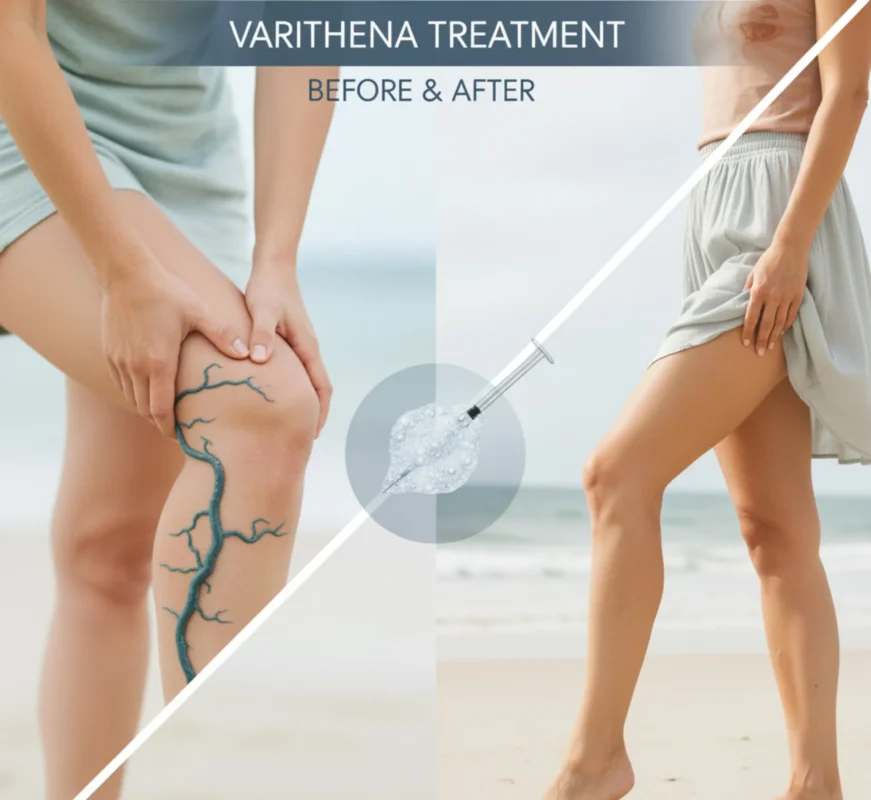Blog
Eel Health Benefits Worth Knowing About

Most people see eel on a menu and immediately skip to the next option. The texture weirds them out, or they’ve never tried it, or it just seems too unfamiliar. But cultures across Asia and Europe have been eating eel for centuries, and they’re not doing it just because it tastes good. The eel health benefits are substantial enough that ignoring this fish means missing out on one of the more nutrient-dense options in the seafood world.
Let’s be clear about what we’re talking about here. Eel isn’t some trendy superfood that’ll fix all your problems. But the nutritional profile is legitimately impressive – the kind of impressive that makes nutrition researchers pay attention and keeps eel as a dietary staple in places like Japan, where people live longer and healthier than almost anywhere else on Earth.

Eel Nutritional Profile at a Glance
Here’s what you’re getting in a 100-gram serving of cooked eel:
| Nutrient | Amount | % Daily Value |
|---|---|---|
| Calories | 200-236 | – |
| Protein | 18-20g | 36-40% |
| Total Fat | 11-15g | – |
| Omega-3 Fatty Acids | 0.7-1.2g | – |
| Vitamin A | 1,043-4,700 IU | 50-150% |
| Vitamin B12 | 2.5-3.5 mcg | 300-400% |
| Vitamin D | 23-32 IU | 10-20% |
| Thiamine (B1) | 0.15mg | 12% |
| Riboflavin (B2) | 0.38mg | 22% |
| Niacin (B3) | 3.5mg | 18% |
| Phosphorus | 216mg | 22% |
| Selenium | 6.5mcg | 30-40% |
| Zinc | 1.6mg | 15% |
| Iron | 0.5mg | 3% |
| Magnesium | 20mg | 5% |
The numbers vary based on whether you’re eating freshwater or saltwater eel, wild or farm-raised, and preparation method. But even at the lower end, the nutritional density is impressive.
Eel Health Benefits Start With Exceptional Protein Quality
One of the primary eel health benefits is the protein content, which sits around 18-20 grams per 100-gram serving. That’s comparable to chicken breast, but here’s where it gets interesting: the protein in eel is complete protein containing all nine essential amino acids your body can’t produce on its own.
Essential amino acids in eel include:
- Leucine – for muscle protein synthesis.
- Isoleucine – for energy regulation and immune function.
- Valine – for muscle growth and tissue repair.
- Lysine – for calcium absorption and collagen formation.
- Methionine – for metabolism and detoxification.
- Phenylalanine – for neurotransmitter production.
- Threonine – for protein balance and immune function.
- Tryptophan – for serotonin production and mood regulation.
- Histidine – for growth and tissue repair.
Your muscles need these amino acids for repair and growth. Your immune system uses them to build antibodies. Every cell in your body depends on amino acid availability for basic function.
The digestibility of eel protein is another factor. Fish protein in general breaks down more easily in your digestive system compared to red meat, meaning your body can actually access and use more of those amino acids. You’re not just eating protein – you’re absorbing it efficiently.
The Omega-3 Content Makes Eel Health Benefits Stand Out
When researchers study eel health benefits, the omega-3 fatty acid content gets serious attention. Eel contains EPA (eicosapentaenoic acid) and DHA (docosahexaenoic acid) – the two omega-3s your body actually wants and uses most effectively.
These aren’t the plant-based omega-3s from flaxseed or walnuts that your body has to convert (and does a pretty lousy job converting, managing maybe 5-10% conversion at best). EPA and DHA from eel are ready to use immediately.
What EPA does in your body:
- Reduces inflammatory compounds throughout your system.
- Lowers triglyceride levels by 20-30% in people with high levels.
- Reduces blood clotting tendency.
- Helps regulate immune responses.
- Supports cardiovascular function.
What DHA does in your body:
- Makes up 40% of polyunsaturated fats in your brain.
- Comprises 60% of polyunsaturated fats in your retina.
- Supports neuron membrane fluidity.
- Aids in neurotransmitter function.
- Protects against cognitive decline.
Studies on omega-3 intake consistently show benefits for cardiovascular health. The American Heart Association recommends eating fatty fish twice weekly largely because of EPA and DHA content. The GISSI Prevention Trial followed over 11,000 heart attack survivors and found that omega-3 supplementation reduced cardiovascular death by 30%.
Vitamin A Content Is Where Eel Health Benefits Get Remarkable
Here’s something most people don’t know: eel contains more vitamin A than almost any other commonly available fish. A single 100-gram serving can provide 50-150% of your daily vitamin A requirement, depending on the eel species and preparation.
The form of vitamin A in eel is retinol – the active form your body can use immediately without conversion. Plant foods contain beta-carotene, which your body has to convert to retinol, and that conversion isn’t particularly efficient. Eel gives you the finished product.
Vitamin A functions in your body:
- Vision: Converts light into electrical signals in your retinas.
- Immune function: Maintains mucous membranes that block pathogens.
- Skin health: Regulates cell turnover and sebum production.
- Reproduction: Supports sperm production and fetal development.
- Bone growth: Influences bone remodeling cells.
- Gene expression: Acts as a signaling molecule for hundreds of genes.
Night blindness is literally the first symptom doctors look for in vitamin A deficiency. One serving of eel can provide more than a full day’s vitamin A requirement, making it one of the richest non-liver food sources available.
Eel Health Benefits Include Extraordinary B12 Levels
The vitamin B12 content in eel is honestly absurd. Some varieties deliver 300-400% of daily B12 needs in a single serving. This is one of those eel health benefits that matters enormously for specific populations.
Groups at high risk for B12 deficiency:
- Vegetarians and vegans (B12 only occurs naturally in animal products).
- Adults over 50 (stomach acid production declines with age).
- People taking metformin for diabetes.
- People taking proton pump inhibitors for reflux.
- People with Crohn’s disease or celiac disease.
- People who’ve had gastric bypass surgery.
B12 deficiency symptoms:
- Persistent fatigue and weakness.
- Memory problems and brain fog.
- Tingling or numbness in hands and feet.
- Difficulty walking or balance problems.
- Depression and mood changes.
- Pale or jaundiced skin.
- Shortness of breath.
Your body uses B12 for DNA synthesis, red blood cell formation, and nerve function. The myelin sheath protecting your nerves requires B12 for maintenance. Without enough B12, that protective coating degenerates, potentially causing permanent nerve damage.
Getting B12 from food beats supplements for absorption. Eel provides so much B12 that eating it even occasionally can prevent deficiency in at-risk populations.
Additional B Vitamins Round Out Eel Health Benefits
Beyond B12, eel contains meaningful amounts of thiamine (B1), riboflavin (B2), niacin (B3), and pantothenic acid (B5). These B vitamins work together in energy metabolism.
How B vitamins from eel support energy:
- Thiamine: Converts carbohydrates into ATP, supports nerve signaling
- Riboflavin: Critical for electron transport chain, acts as antioxidant
- Niacin: Participates in 400+ enzymatic reactions, supports DNA repair
- Pantothenic acid: Forms Coenzyme A, essential for fat metabolism
Traditional Korean medicine has long valued eel for stamina and energy. The B vitamin content provides a scientific basis for those traditional observations. You’re not getting a caffeine-like stimulant effect – you’re supporting the actual cellular machinery that produces energy.
Vitamin D Content Addresses A Common Deficiency
Vitamin D deficiency affects an estimated 40% of Americans and even higher percentages in northern countries. Most people get inadequate sun exposure, and few foods naturally contain vitamin D.
Eel provides 10-20% of daily vitamin D needs per serving. That’s not enough to fix a deficiency by itself, but it contributes meaningfully when combined with other sources.
Vitamin D does more than support bones:
- Regulates immune cell function and inflammatory responses
- Influences mood and may reduce depression risk
- Supports muscle function and strength
- Affects insulin sensitivity and diabetes risk
- Modulates gene expression in hundreds of genes
- May reduce certain cancer risks
Getting vitamin D from food along with all the other nutrients in that food provides benefits that isolated supplements might not match. The eel health benefits package includes this often-deficient vitamin naturally.
Mineral Content Contributes To Overall Eel Health Benefits
Key minerals in eel and what they do:
Phosphorus (200-300mg per serving):
- Combines with calcium to form bone mineral
- Forms the backbone of DNA and RNA molecules
- Part of ATP molecules that store cellular energy
- Component of cell membranes (phospholipids)
- Helps activate B vitamins for energy production
Selenium (30-40% of daily needs):
- Functions in antioxidant enzymes that protect cells
- Required for thyroid hormone production and metabolism
- Supports immune function and DNA synthesis
- May reduce cancer risk through multiple mechanisms
- Protects against oxidative stress and inflammation
Zinc (15% of daily needs):
- Essential for immune cell development and function
- Required for wound healing and protein synthesis
- Supports DNA synthesis and cell division
- Necessary for taste and smell function
- Influences testosterone levels and fertility
Iron (3% of daily needs):
- Component of hemoglobin that carries oxygen in blood
- Part of myoglobin that stores oxygen in muscles
- Required for cellular energy production
- Supports immune function and cognitive development
Magnesium (5% of daily needs):
- Cofactor in 300+ enzymatic reactions
- Regulates muscle and nerve function
- Supports blood pressure regulation
- Necessary for protein synthesis and bone formation
You’re not getting massive doses of any single mineral except phosphorus and selenium, but you’re getting meaningful amounts of many essential minerals from one food source.
Cardiovascular Benefits Represent Major Eel Health Benefits
The combination of omega-3 fatty acids, selenium, vitamin E, and the overall fat profile makes eel notably heart-healthy.
How eel supports cardiovascular health:
| Mechanism | Effect | Clinical Significance |
|---|---|---|
| EPA/DHA reduces triglycerides | 20-30% reduction | Lowers cardiovascular disease risk |
| Omega-3s reduce blood pressure | 2-3 mmHg reduction | Meaningful over time for hypertension |
| Anti-platelet effects | Reduced clotting | Lower thrombosis risk |
| Anti-inflammatory action | Reduced arterial inflammation | Slows atherosclerosis progression |
| Improved endothelial function | Better blood vessel dilation | Enhanced circulation |
| Reduced arrhythmia risk | Stabilized heart rhythm | Lower sudden cardiac death risk |
Brain Health And Cognitive Function Benefits
Your brain uses about 20% of your body’s total energy despite being only 2% of body weight. Brain tissue is roughly 60% fat, and DHA makes up a large portion of that fat, especially in cell membranes and synapses where neurons communicate.
DHA’s role in brain function:
- Makes up 40% of polyunsaturated fatty acids in brain gray matter.
- Comprises 50% of neuron plasma membrane weight.
- Concentrated heavily in synapses where neurons communicate.
- Required for neurotransmitter release and receptor function.
- Protects against oxidative stress in brain tissue.
- Influences gene expression related to brain plasticity.
Studies on omega-3 intake and dementia risk show mixed results, but several large analyses suggest higher fish consumption correlates with lower Alzheimer’s risk. A study published in Neurology found that older adults with higher blood DHA levels had larger brain volumes and performed better on cognitive tests.
The mechanism makes sense. DHA reduces inflammation in brain tissue. It supports the fluidity of cell membranes, which affects how well neurons communicate. It may help clear amyloid proteins that accumulate in Alzheimer’s disease.
Eel Health Benefits For Eye Health
Your retinas contain the highest concentration of DHA in your entire body. The photoreceptor cells that convert light into electrical signals have cell membranes packed with DHA.
How eel nutrients protect vision:
- DHA maintains photoreceptor membrane fluidity for optimal function.
- Vitamin A produces rhodopsin, the pigment for low-light vision.
- Omega-3s reduce inflammation that contributes to macular degeneration.
- Antioxidants protect retinal tissue from oxidative damage.
- These nutrients work synergistically for comprehensive eye protection.
The Age-Related Eye Disease Study found that people with higher omega-3 intake had lower rates of macular degeneration – the leading cause of vision loss in older adults.
Night blindness is literally the first symptom doctors look for in vitamin A deficiency. One serving of eel can provide more than a full day’s vitamin A requirement.
Skin Health Benefits From Multiple Nutrients
The eel health benefits for skin come from several angles.
Nutrients in eel that support skin health:
- Vitamin A regulates skin cell turnover and sebum production.
- Omega-3s reduce inflammation in conditions like eczema and psoriasis.
- Omega-3s help maintain the skin’s lipid barrier for hydration.
- Protein provides amino acids for collagen and elastin synthesis.
- Selenium protects against UV damage and oxidative stress.
- Zinc supports wound healing and reduces acne inflammation.
Dermatologists prescribe retinoids (vitamin A derivatives) for acne, wrinkles, and various skin conditions because of how effectively vitamin A influences skin cell behavior.
Eel skin contains mucin, a glycoprotein that’s been studied for moisturizing properties. Japanese cosmetics companies have researched eel mucin for skincare products. Whether eating eel provides the same topical benefits is unclear, but the vitamin content certainly helps skin from the inside.
Immune System Support
Multiple nutrients in eel work together to support immune function.
How eel nutrients boost immunity:
- Vitamin A maintains mucous membranes that block pathogens from entering your body.
- Vitamin A influences white blood cell development and function.
- Vitamin D modulates both innate and adaptive immune responses.
- Vitamin D prevents excessive inflammation that damages tissues.
- Selenium supports immune cell production and antioxidant defenses.
- Zinc is essential for immune cell development and signaling.
- Protein provides amino acids for antibody production.
- Omega-3s regulate inflammatory responses to prevent autoimmune overreactions.
The combination of these immune-supporting nutrients makes eel a genuinely supportive food for immune health, especially during cold and flu season or for people with compromised immune systems.
Energy Metabolism And Stamina
Traditional Chinese and Korean medicine have long valued eel for building stamina and vitality. The B vitamin content provides a scientific basis for these traditional uses.
B vitamins from eel support energy at the cellular level:
- Thiamine helps convert carbohydrates into ATP.
- Riboflavin is essential for the electron transport chain that produces most cellular ATP.
- Niacin participates in over 400 enzymatic reactions, many involved in energy production.
- Pantothenic acid is literally part of Coenzyme A, which is central to fat metabolism.
- B12 supports red blood cell formation that carries oxygen to tissues.
Getting these vitamins from food along with quality protein and healthy fats provides sustained energy support rather than the spike-and-crash of stimulants.
Comparing Eel to Other Fish
Here’s how eel stacks up against other commonly eaten fish:
| Nutrient (per 100g) | Eel | Salmon | Tuna | Tilapia |
|---|---|---|---|---|
| Protein | 18-20g | 20g | 23g | 26g |
| Omega-3s | 0.7-1.2g | 2.3g | 0.3g | 0.2g |
| Vitamin A | 1,043-4,700 IU | 40 IU | 20 IU | 0 IU |
| Vitamin B12 | 2.5-3.5 mcg | 3.2 mcg | 4.9 mcg | 1.6 mcg |
| Vitamin D | 23-32 IU | 570 IU | 200 IU | 0 IU |
| Selenium | 6.5 mcg | 36 mcg | 90 mcg | 42 mcg |
| Calories | 200-236 | 208 | 144 | 128 |
Eel stands out dramatically for vitamin A content. It holds its own for B12 and provides respectable omega-3s, though salmon wins that category. The overall nutrient package is what makes eel special – you’re getting multiple nutrients at high levels in one food.
Potential Anti-Inflammatory Benefits
Beyond omega-3s, eel contains peptides and compounds that researchers have examined for anti-inflammatory properties.
Why anti-inflammatory foods matter:
- Chronic inflammation underlies heart disease, diabetes, cancer, Alzheimer’s, and arthritis
- Modern diets high in omega-6s promote inflammation when not balanced by omega-3s
- Anti-inflammatory foods reduce disease risk over time
- The omega-3 to omega-6 ratio in eel is favorable for reducing inflammation
Eating omega-3-rich foods like eel helps restore the balance between inflammatory and anti-inflammatory signaling in your body.
Considerations And Potential Downsides
The eel health benefits are substantial, but there are factors to consider.
Potential concerns with eating eel:
- Environmental contaminants (PCBs, mercury) – typically lower than large predatory fish but still present.
- Farm-raised eel may have lower omega-3 content than wild eel.
- Many preparations use heavy sweet sauces that add significant sugar.
- Cost is higher than salmon, tilapia, or most other common fish.
- Texture can be off-putting if not cooked properly.
- Pregnant women should limit frequency due to contaminant concerns.
Farm-raised eel dominates the market now, which helps with sustainability but can mean lower omega-3 content compared to wild eel. The nutritional differences aren’t dramatic, but they exist.
Some people find the texture off-putting. Properly cooked eel is firm but tender, but overcooked eel becomes rubbery and unpleasant.
How To Actually Eat Eel
Common eel preparations around the world:
- Japanese unagi: Grilled freshwater eel, often glazed with sweet tare sauce, served over rice.
- Korean jangeo-gui: Grilled eel, often with minimal seasoning to highlight natural flavor.
- European smoked eel: Cold-smoked and sliced thin, served as appetizer.
- Chinese braised eel: Cooked in soy-based sauce with aromatics.
- Jellied eel: Traditional British dish, less common now.
The taste is rich and slightly sweet with a delicate flavor that isn’t as “fishy” as salmon or mackerel. The texture is firm and meaty when cooked correctly.

Tips for first-timers:
- Order it at a reputable Japanese or Korean restaurant first.
- Try unagi nigiri or unagi don (eel over rice) for classic preparations.
- Don’t overcook it at home – that’s the most common mistake.
- Pre-cooked eel just needs gentle reheating.
- Fresh eel should be grilled or broiled quickly over high heat.
The eel health benefits are legitimate and backed by solid nutritional science. You’re getting high-quality protein, exceptional amounts of vitamins A and B12, meaningful omega-3 fatty acids, and a range of minerals that support everything from bone health to immune function.
Is it essential? No. Can you get similar nutrients from other fish? Partially, though you’d need to eat several different types to match the vitamin A and B12 levels eel provides. For people who eat fish anyway, rotating eel into your diet makes sense from a pure nutrition standpoint. The eel health benefits package is comprehensive enough to justify the higher cost and unfamiliarity factor – assuming you can get past the texture and actually enjoy eating it.












